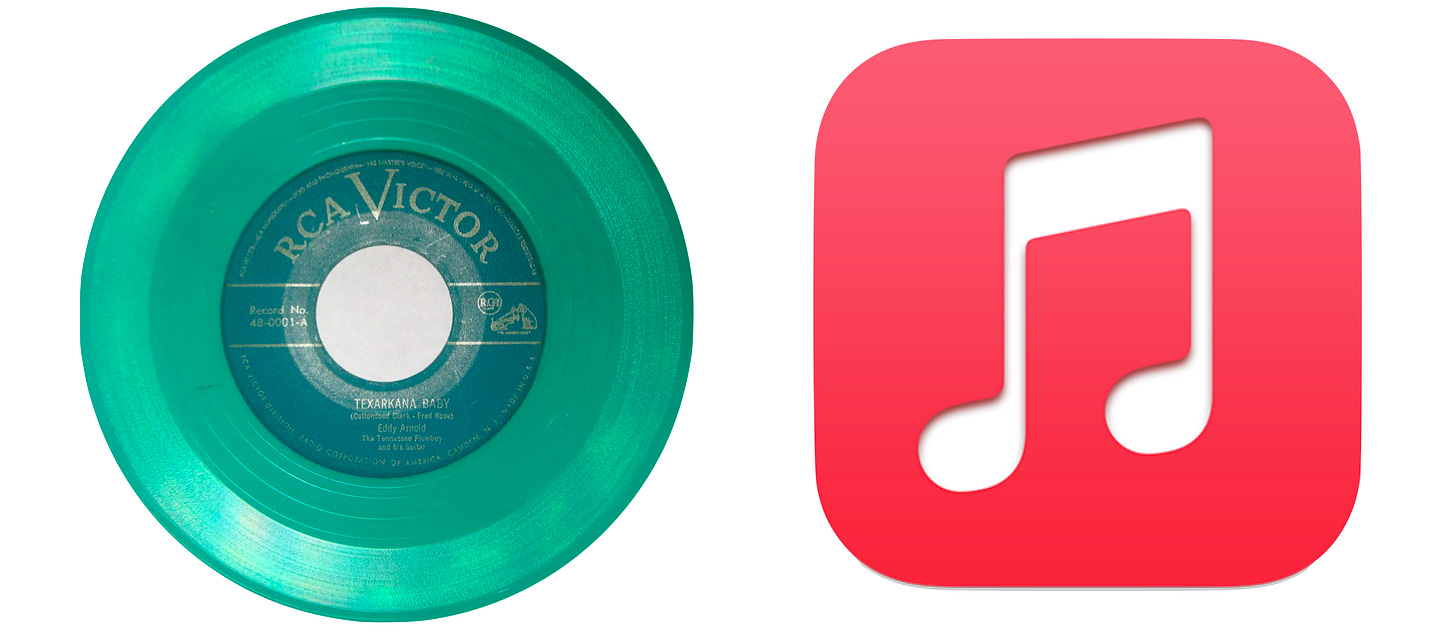The original phonograph record was developed by Thomas Edison in 1877. The first playable records were made from paper pressed between two pieces of tin foil.
On March 15th, 1949, RCA Victor became the first label to roll out 45 RPM vinyl records. They were smaller and held less music than the popular 78s and were printed in different colors from deep red to dark blue. Rolling Stone notes that “Teenagers of the Fifties took to the portable, less-expensive format; one ad at the time priced the records at 65 cents each. One of rock’s most cataclysmic early hits, Bill Haley and the Comets’ ‘Rock Around the Clock,’ sold 3 million singles in 1955.”
Unskilled workers at the time were earning around 97 cents an hour. This would put the time price of a song at 40 minutes.
Steve Jobs introduced the iTunes Store on April 28, 2003 and sold songs for 99 cents. By this time unskilled wages had increased to $9.25 an hour. The time price of a song had dropped 84 percent to 6.42 minutes. Listeners in 2003 got six songs for the price of one in 1955.
Apple Music was launched on June 30, 2015. Today a student can get access to 90 million songs for $5.99 a month. Unskilled workers are earning around $14.53 an hour, so the time price is around 25 minutes. Users can stream as well as download albums and tracks to devices for offline playback. If a typical song runs three to four minutes, you can play 12,342 songs per month. The time price per song is around one-eighth of a second. For the time it took our grandparents to earn the money to buy one song back in 1955, we get 19,750 today. Since 1955, personal music abundance has been growing around 15.9 percent a year, doubling in abundance every 4.5 years. This happened while global population grew by 5 billion, or 178 percent, from 2.8 to 7.8 billion. This would be a 1.54 percent compound annual growth rate. Music abundance is growing over ten times faster than population. Abundance allows us the time to create more abundance.
All of the products we enjoy around us today are the culmination of billions and billions of little bits of knowledge that human beings discover and then share with the rest of us in free markets. Create a song and share it with the planet. We can lift and make life better for one another.
Do we still have problems? Of course we have and will always have challenges, but look at what we have accomplished in the last 200 years. This is what happens when people are free to solve one another’s problems.
You can learn more about these economic facts and ideas in our new book, Superabundance, available at Amazon. Jordan Peterson calls it a “profoundly optimistic book.”
Gale Pooley is a Senior Fellow at the Discovery Institute and a board member at Human Progress.






Music distribution has undoubtedly gone through revolutionary and disruptive changes over the last few decades. From CDs to Napster, iPods to streaming services, digitization across the whole music production and distribution ecosystem has given us more music to enjoy than is possible in a person's life time. I see the bigger issue for music consumers today being able to find great music and independent artists outside the major labels.